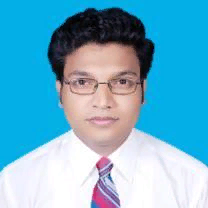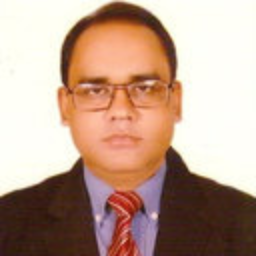International Journal of Information Technology and Computer Science (IJITCS)
IJITCS Vol. 6, No. 6, 8 May 2014
Cover page and Table of Contents: PDF (size: 365KB)
Metal Artifact Reduction from Computed Tomography (CT) Images using Directional Restoration Filter
Full Text (PDF, 365KB), PP.47-54
Views: 0 Downloads: 0
Author(s)
Index Terms
Artifact reduction, Filter, Stent wire, Computed Tomography, Restoration, Gaussian convolution
Abstract
Computed tomography angiography (CTA) is a stabilized tool for vessel imaging in the medical image processing field. High-intense structures in the contrast image can seriously hamper luminal visualization. Metal artifacts are an extensive problem in computed tomography (CT) images. We proposed directional restoration filtering process with Fuzzy logic in order to reduce metal artifact from CT images. We create two sets by iteration process and these sets will be sorted in ascending order. After sorting we take two elements from two data sets and the tracking both elements will be selected from the second position of those sorting arrays. Intersection Fuzzy logic will be executed between two selected elements and Gaussian convolution operation will be performed in the entire images because of enhancement the artifact affected CT images. In this paper, we investigated a fully automated intensity-based filter and it depends on the gray level variation rating. This results in a better visualization of the vessel lumen, also of the smaller vessels, allowing a faster and more accurate inspection of the whole vascular structures.
Cite This Paper
Mithun Kumar PK, Mohammad Motiur Rahman, "Metal Artifact Reduction from Computed Tomography (CT) Images using Directional Restoration Filter", International Journal of Information Technology and Computer Science(IJITCS), vol.6, no.6, pp.47-54, 2014. DOI:10.5815/ijitcs.2014.06.07
Reference
[1]G N Hounsfield, “Computerized transverse axial scanning (tomography): Part 1. description of system”, British Journal of Radiology, (1973, December), 46:1016–1022.
[2]Fessler J A, (2000), in J.MFritzpatrick andMSonka, eds, “Handbook of Medical Imaging”, Vol. 2 SPIE Press Bellingham, WA chapter 1, pp. 1–70.
[3]LaRivière P J and Vargas P, M. J Flynn and J Hsieh, ‘Medical Imaging 2006: Physics of Medical Imaging’, 2006, Vol. 6142 Proc. SPIE pp. 61420X–1–61420X8.
[4]Oehler M and Buzug T M , Meth. Inform. Med. 2007, 46, 261–269.
[5]Müller J and Buzug T M, in E Samei and J Hsieh, eds, ‘Medical Imaging 2009: Physics of Medical Imaging’ 2009, Vol. 7258 Proc. SPIE pp. 72581Y–1–8.
[6]Bhateja, V., Devi, S.: An Improved Non-Linear Transformation Function for Enhancement of Mammographic Breast Masses. In: Proc. of (IEEE) 3rd International Conference on Electronics & Computer Technology (ICECT 2011), Kanyakumari (India), 2011, vol. 5, pp. 341–346.
[7]Chen, L., Lu, G., Zhang, D.: Effects of Different Gabor Filter Parameters on Image Retrieval by Texture. In: Proc. of IEEE 10th International Conference on Multi-Media Modelling, Brisbane, Australia, (January 2004). pp. 273–278.
[8]Perreault, S., Hébert, P.: Median Filtering in Constant Time. IEEE Trans. on Image Processing, 2007, 16(6), 2389–2394.
[9]Solbo, S., Eltoft, T.: Homomorphic Wavelet Based Statistical Despeckling of SAR Images. IEEE Trans. on Geoscience and Remote Sensing, 2004, 42(4), 711–721.
[10]Strela, V.: Denoising via Block Wiener Filtering in Wavelet Domain. In: 3rd European Congress of Mathematics, (July 2000), Barcelona, Spain.
[11]Kaur, A., Singh, K.: Speckle Noise Reduction by Using Wavelets. In: National Conference on Computational Instrumentation, Chandigarh, India, (March 2010), pp. 198–203.
[12]Mohideen, S.K., Perumal, S.A., Sathik, M.M.: Image Denoising Using Discrete Wavelet Transform. International Journal of Computer Science and Network Security, 2008, 8(1), 213–216.
[13]Solbo, S., Eltoft, T.: A Stationary Wavelet Domain Wiener Filter for Correlated Speckle. IEEE Trans. on Geoscience and Remote Sensing, 2008, 46(4), 1219–1230.
[14]Tong, Z., Chen, X., Akram, M.N., Aksnes, A.: Compound Speckle Characterization Method and Reduction by Optical Design. Journal of Display Technology, 2012, 8(3), 132–137.
[15]Jain, A., Bhateja, V.: A Novel Image Denoising Algorithm for Suppressing Mixture of Speckle and Impulse Noise in Spatial Domain. In: Proc. of IEEE 3rd International Conference on Electronics and Computer Technology, Kanyakumari, India, (April 2013), pp. 207–211.
[16]Singh, S., Jain, A., Bhateja, V.: A Comparative Evaluation of Various Despeckling Algorithms for Medical Images. In: Proc. of (ACMICPS) CUBE International Information Technology Conference & Exhibition, Pune, India, (September 2012), pp. 32–37.
[17]Jain, A., Singh, S., Bhateja, V.: A Robust Approach for Denoising and Enhancement of Mammographic Breast Masses. International Journal on Convergence Computing, 2013, 1(1), 38–49.
[18]Bhateja, V., Urooj, S., Pandey, A., Misra, M., Lay-Ekuakille, A.: A Polynomial Filtering Model for Enhancement of Mammogram Lesions. In: Proc. of IEEE International Symposium on Medical Measurements and Applications, Gatineau (Quebec), Canada, (May 2013), pp. 97–100.
[19]Bhateja, V., Urooj, S., Pandey, A., Misra, M., Lay-Ekuakille, A.: Improvement of Masses Detection in Digital Mammograms employing Non-Linear Filtering. In: Proc. of IEEE International Multi-Conference on Automation, Computing, Control, Communication and Compressed Sensing, Palai-Kottayam, Kerala, India, (2013), pp. 406–408.
[20]Rahman, M. M., PK, M. K., Borucki, B., Nowinski, K.S.: Speckle noise reduction of ultrasound images using Extra-Energy Reduction function, IEEE 2nd International Conference on Informatics, Electronics and Vision, Dhaka, Bangladesh, (May 2013), pp. 1–6.
[21]Gupta, A., Tripathi, A., Bhateja, V.: Despeckling of SAR Images via an Improved Anisotropic Diffusion Algorithm. In: Satapathy, S.C., Udgata, S.K., Biswal, B.N. (eds.) Proceedings of Int. Conf. on Front. of Intell. Comput. AISC, Springer, Heidelberg (2013), vol. 199, pp. 747–754.
[22]Gupta, A., Ganguly, A., Bhateja, V.: A Noise Robust Edge Detector for Color Images using Hilbert Transform. In: Proc. of (IEEE) 3rd International Advance Computing Conference (IACC 2013), Ghaziabad (U.P.), India, 2013, pp. 1207–1212.
[23]Zhang, J., Hu, J.: Image Segmentation Based on 2D Otsu Method with Histogram Analysis. In: International Conference on Computer Science and Software Engineering, Wuhan, Hubei, (December 2008), pp. 105–108.
[24]Sezgin, M., Sankur, B.: Survey Over Image Thresholding Techniques and Quantitative Performance Evaluation. Journal of Electronic Imaging, 2004, 13(1), 146–165.
[25]Azarbad, M., Ebrahimzade, M.A., Izadian, V.: Segmentation of Infrared Images and Objectives Detection Using Maximum Entropy Method Based on the Bee Algorithm. International Journal of Computer Information Systems and Industrial Management Applications, 2011, 3, 26–33.
[26]Gupta, A., Ganguly, A., Bhateja, V.: An Edge Detection Approach for Images Contaminated with Gaussian and Impulse Noises. In: Mohan, S., Suresh Kumar, S. (eds.) ICSIP 2012. LNEE, Springer, Heidelberg (2012), vol. 222, pp. 523–533.
[27]Jain, A., Bhateja, V.: A Versatile Denoising Method for Images Contaminated with Gaussian Noise. In: Proc. of CUBE Int. Information Technology Conf. & Exhibition, Pune, India, 2012, pp. 65–68.
[28]Chumning, H., Huadong., C.W.: Edge preservation evaluation of digital speckle filters. In: IEEE International Geoscience and Remote Sensing Symposium, June 24-28, 2002, vol. 4, pp. 2471-2473.
[29]Rahman, M. M., PK, M. K., Aziz, A., Arefin M.G. and Uddin, M. S., “Adaptive anisotropic diffusion filter for speckle noise reduction for ultrasound images”, Inderscience Publishers International Journal on Convergence Computing, 2013, 1(1), 50–59.
[30]Jain, A., Bhateja, V.: A Full-Reference Image Quality Metric for Objective Evaluation in Spatial Domain. In: Proc. of IEEE International Conference on Communication and Industrial Application (ICCIA), Kolkata (W. B.), India, 2011, pp. 91–95.
[31]Guo, Y., Cheng, H.D., Tian, J., Zhang, Y.: A Novel Approach to Speckle Reduction to Ultrasound Image. In: Proc. of 11th Joint Conference on Information Sciences, China, (December 2008), pp. 1–6.
[32]Bhateja, V., Misra, M., Urooj, S., Lay-Ekuakille, A.: A Robust Polynomial Filtering Framework for Mammographic Image Enhancement from Biomedical Sensors. IEEE Sensors Journal, 2013, 1–10.
[33]Trujillo, C. and Garcia-Sucerquia, J.Accelerated Numerical Processing of Electronically Recorded Holograms With Reduced Speckle Noise”, IEEE Trans. On Image Processing, 2013, 22(9), pp. 3528 – 3537.
[34]P. Perona and J. Malik., “Scale space and edge detection using anisotropic diffusion,” IEEE Trans on pattern analysis and machine, 1990, vol. 12, no.7, pp. 629-639.
[35]F. Zhang, Y. M. Yoo, L. M. Koh and Y. Kim, “Nonlinear Diffusion in Laplacian Pyramid Domain for Ultrasonic Speckle Reduction,” IEEE Trans. On Medical Imaging, 2007, vol. 26, no. 2, Feb 2007.
[36]M. J. Black, G. Sapiro, D. H. Marimont and D. Heeger, “Robust anisotropic diffusion, ” IEEE Trans. Image Process., Mar. 1998, vol. 7, no. 3, pp. 421–432,.
[37]Y. J. Yu and S. T. Acton, “Speckle reducing anisotropic diffusion,” IEEE Trans. Image Process, Nov. 2002, vol. 11, no. 11, pp. 1260–1270.
[38]Wang, Y., “The real-time process algebra (RTPA)”. Annals of Software Engineering: An International Journal, (2002, October), 14, 235-274. Kluwer Academic Publishers.

